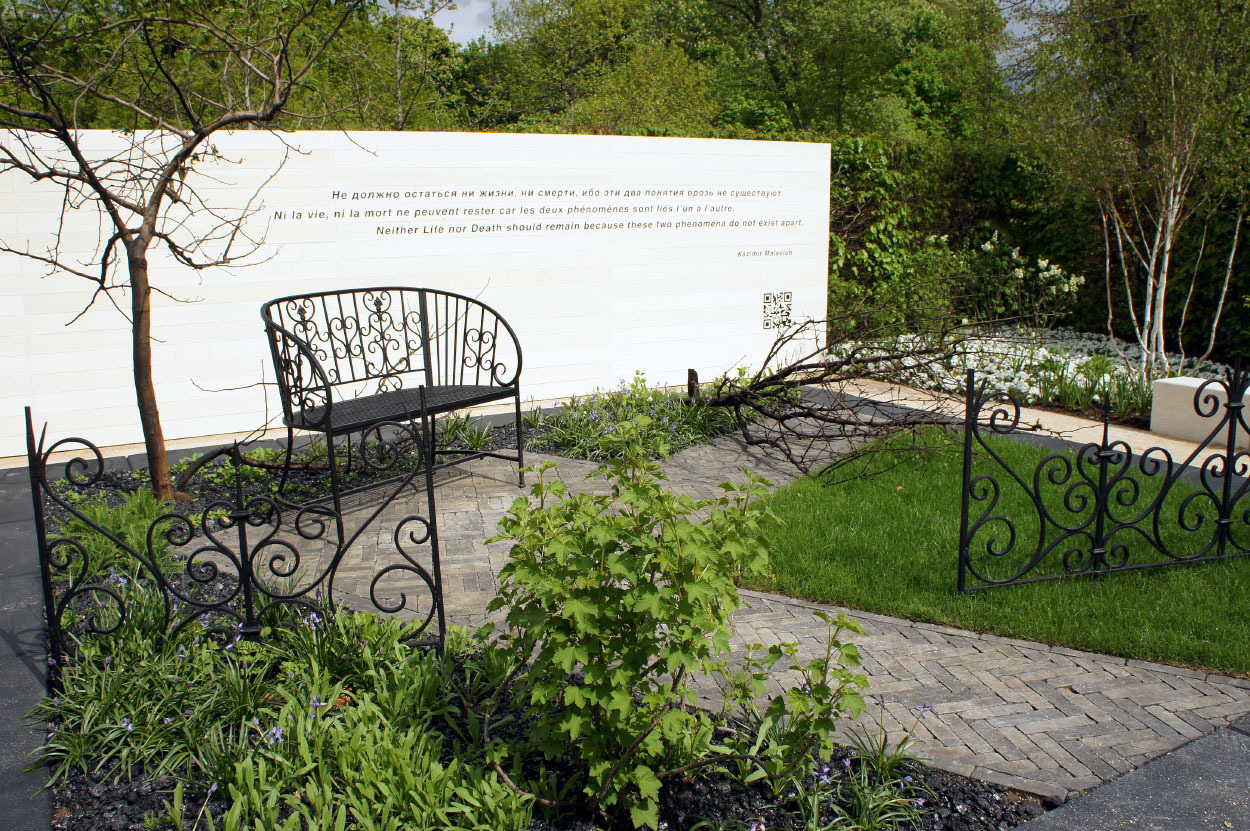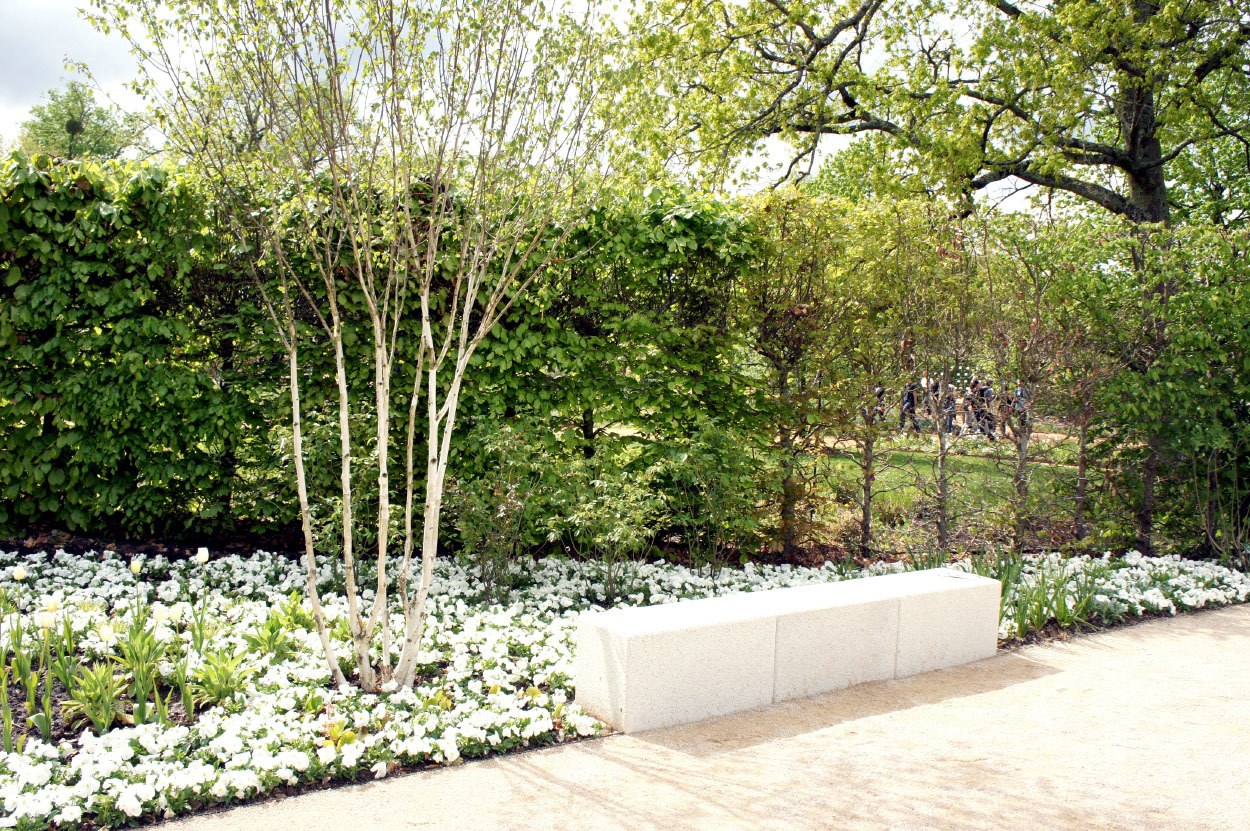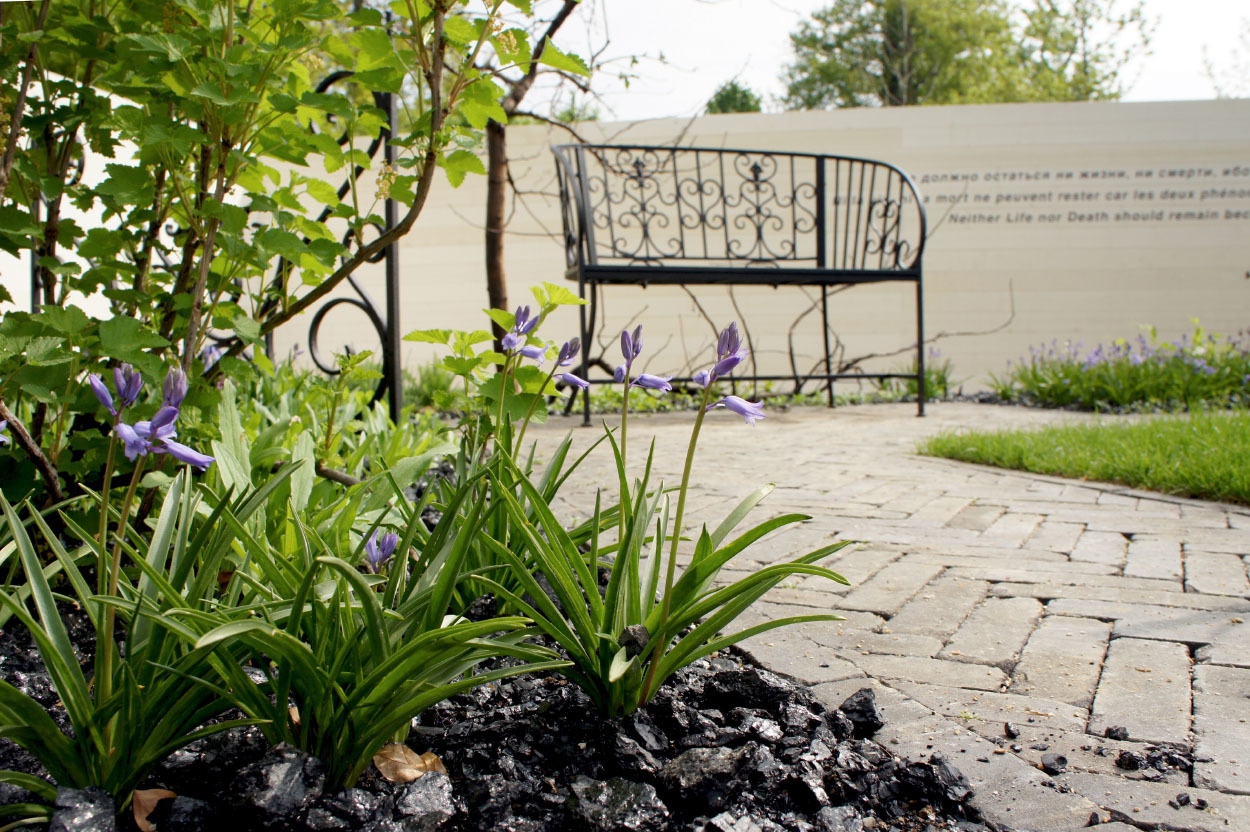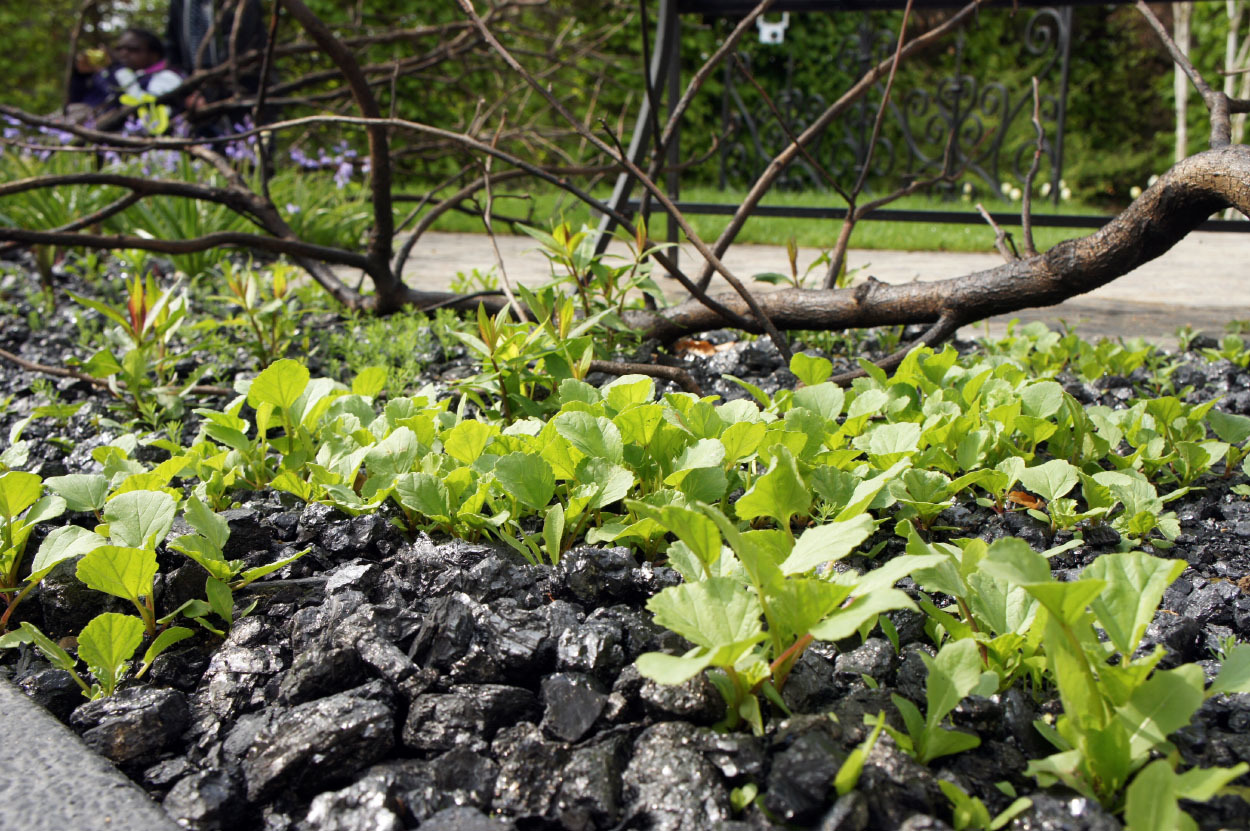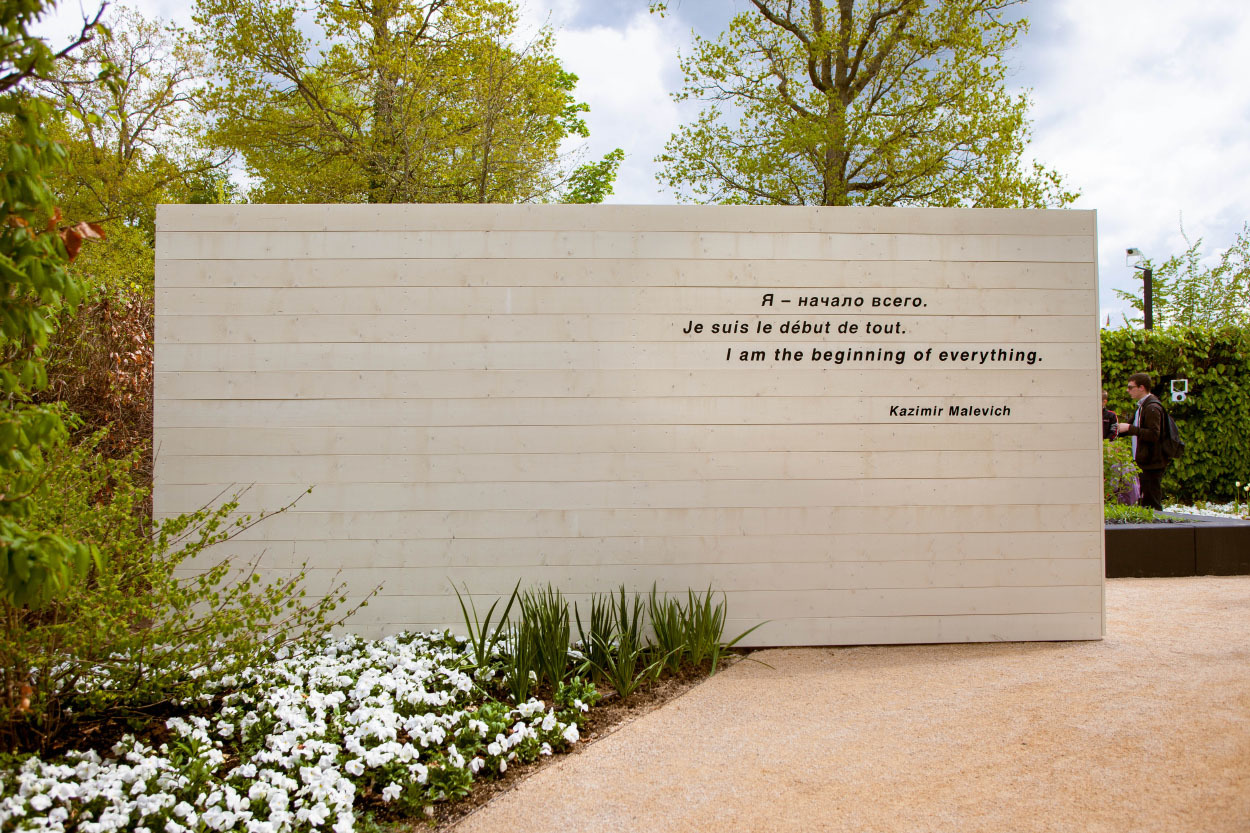The black portion – the garden itself – is positioned roughly half a metre above the light-coloured surface. The black square is a very simple but very strong symbol, alluding to the ideas and art of the Russian painter Kazimir Malevich.
The “Renaissance” Garden
The “Renaissance” Garden
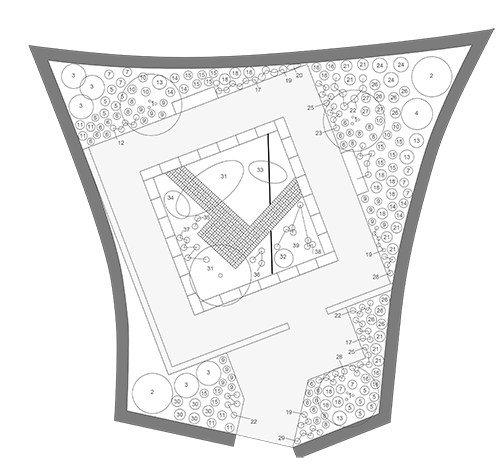
We created the “Renaissance” exhibition garden for the
In a nutshell
The festival theme was “Gardens of Sensations”. We were interested in expanding on the theme by exploring the sensations of time and its passing. The most accessible and illustrative examples of this are the transition from day to night and the turning of the seasons. However, we wanted to portray its broader and less obvious manifestations to ponder the infinite nature of life, as well as the cycle of destruction and creation. We focused on the renaissance phase; whilst the preceding destruction is implied, it remains “outside the frame”.
The Garden
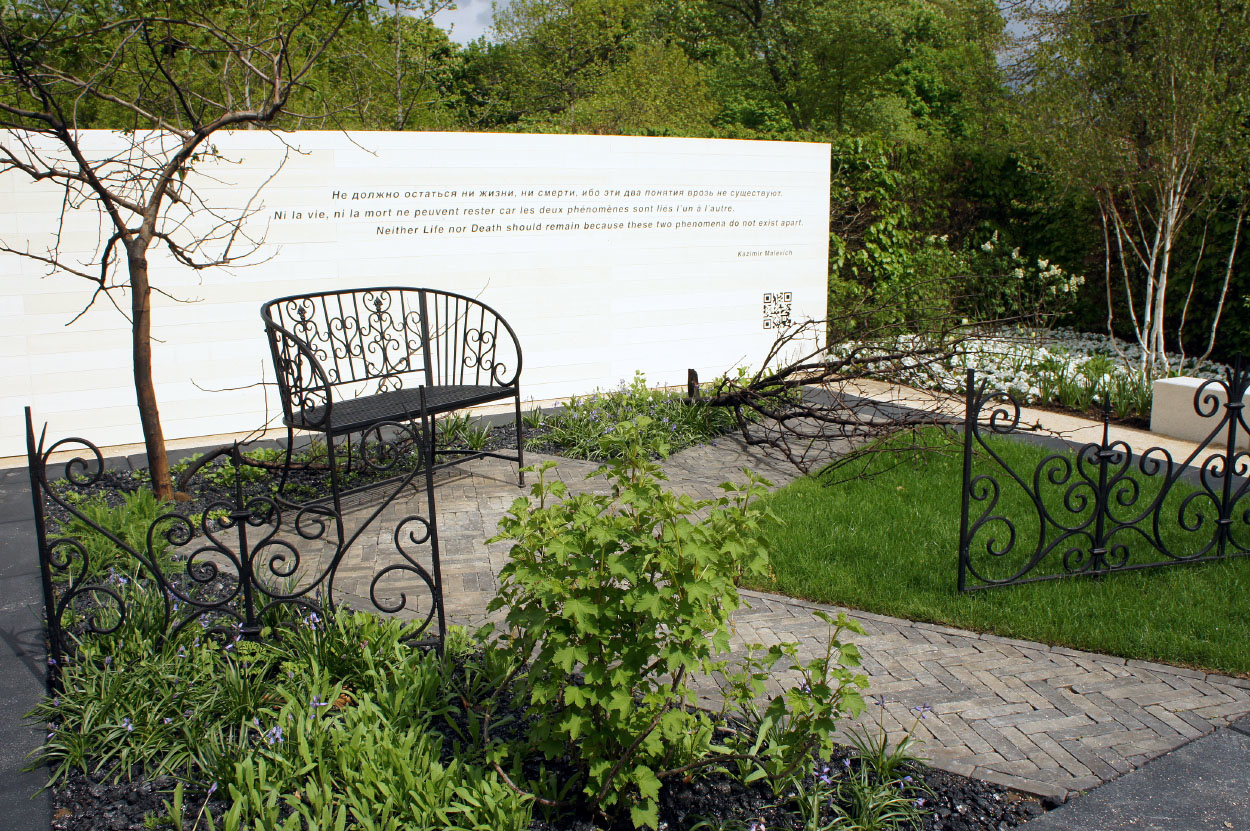
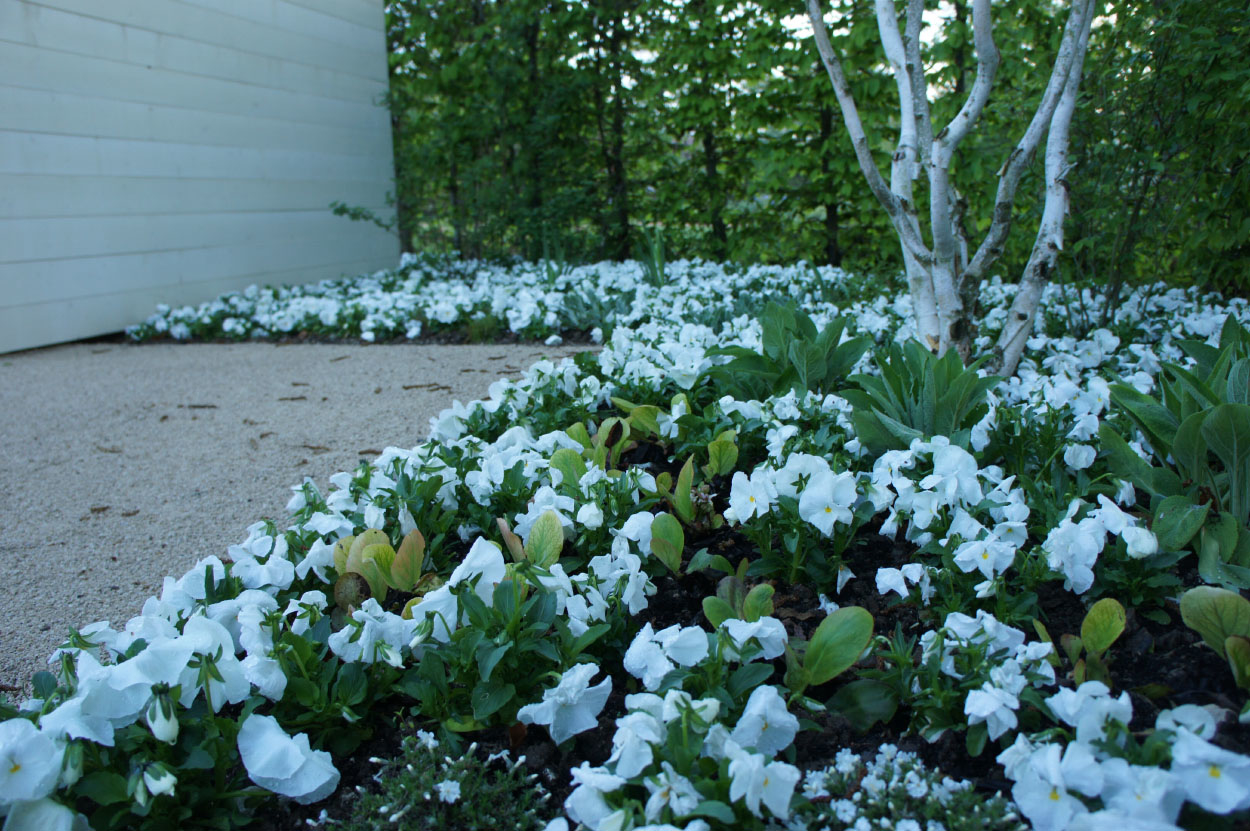
White and green flower gardens frame the outside perimeter. A white wooden wall marks the edge of the garden displaying Malevich quotes calling for contemplation in Russian, French, and English. One is on the outside – “I am the beginning of everything” – and another is on the garden side – “Neither Life, nor Death should remain because these two phenomenons don’t exist apart”.
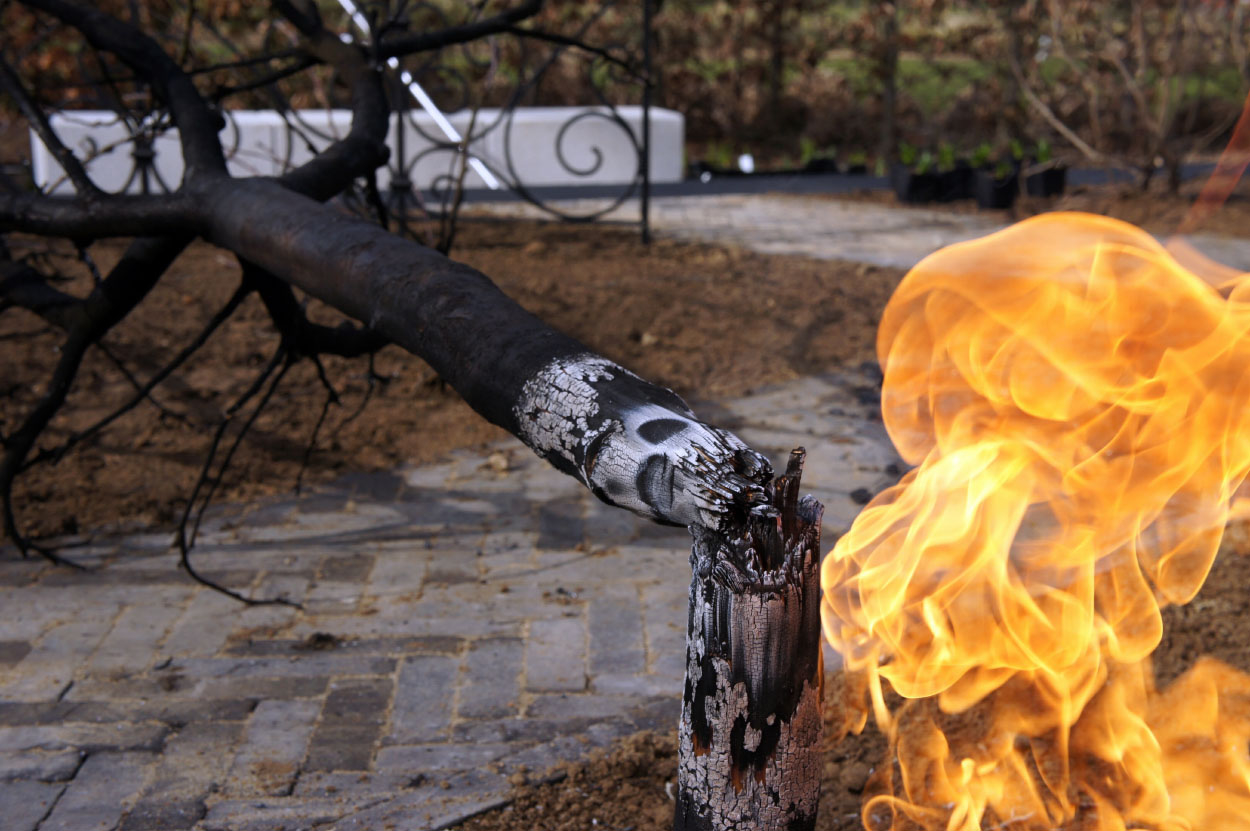
Charcoal black is the colour of smouldering ruins. A garden consumed by fire is a very powerful image in and of itself that speaks of loss. And yet the garden is continually reborn in one form or another. L
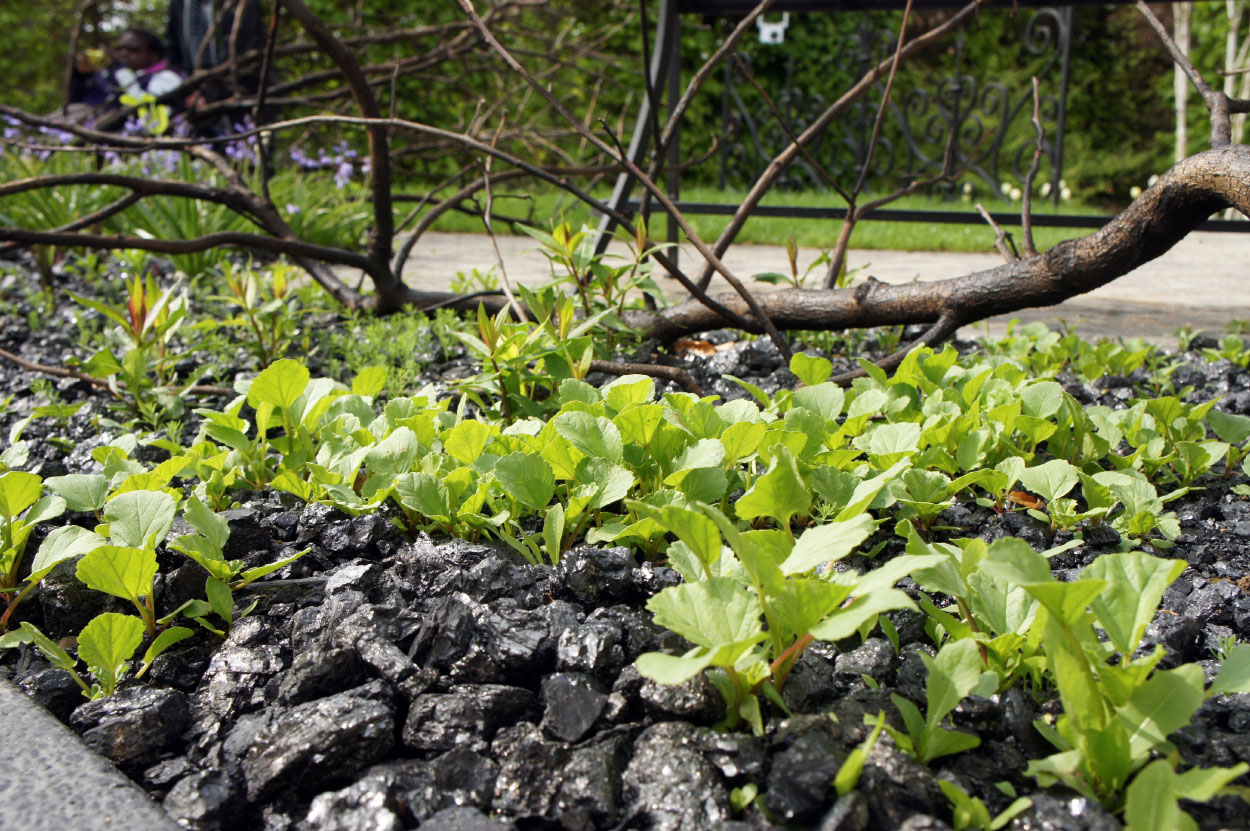
Embers and ashes form the traces of what once stood on this spot and was then destroyed. But this is also fertile soil for new growth. After all, besides water and sun, these traces contain everything plants need to grow.
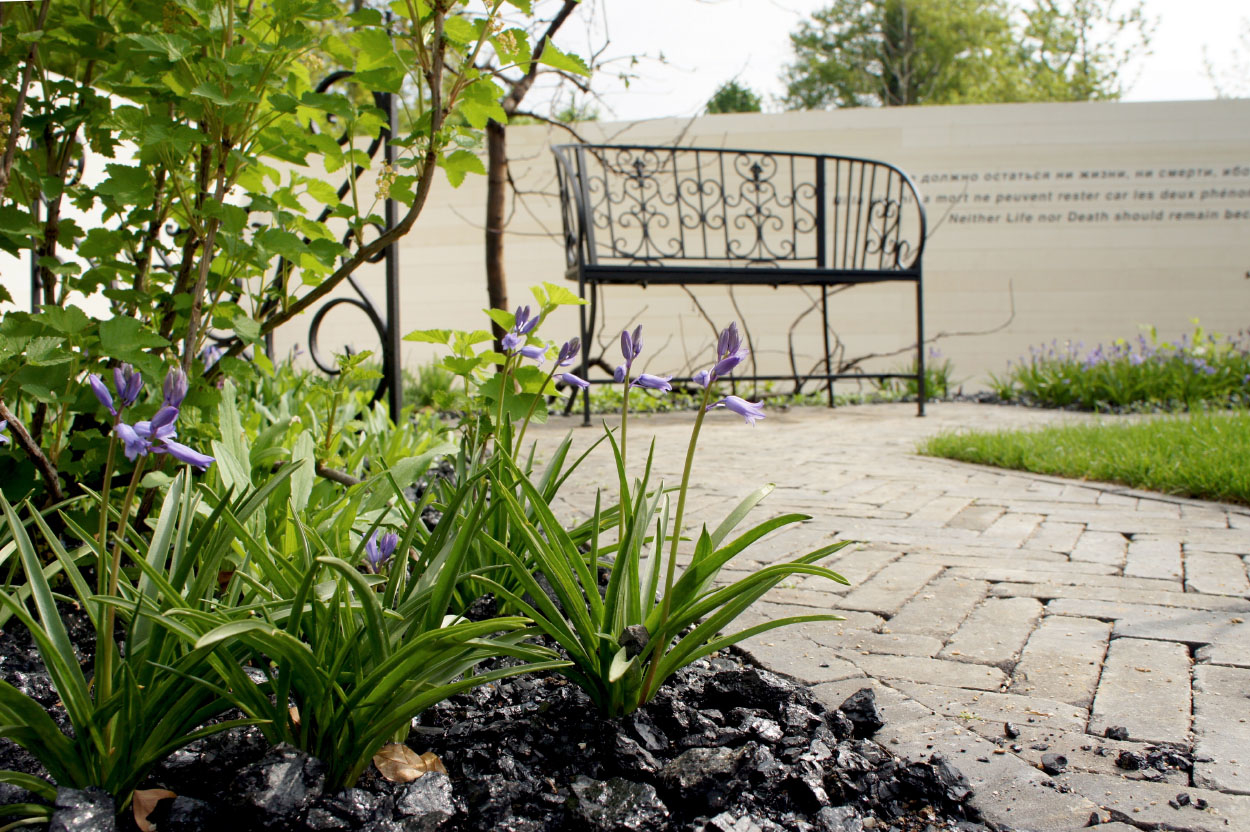
Over the course of the exhibition, from April to December, the “scorched” garden recovers and turns green. We imagined how life would gradually return to the scene of the conflagration and tried to recreate this renaissance both visually and emotionally. We gave nature a “helping hand” by planting and sowing appropriate plant species, but we did so little by little, giving visitors the impression that the garden sprung up all by itself, without any outside assistance
Photographing the garden’s development and posting the pictures online was a key component of our project, giving us an additional vantage point of perception.
